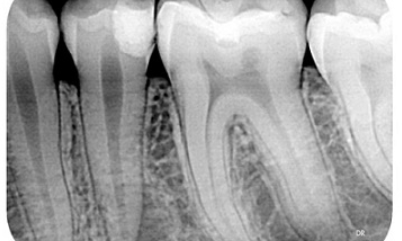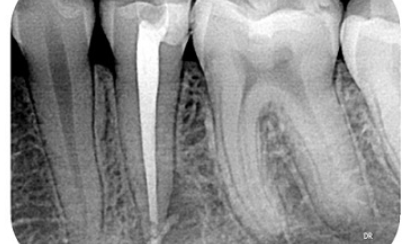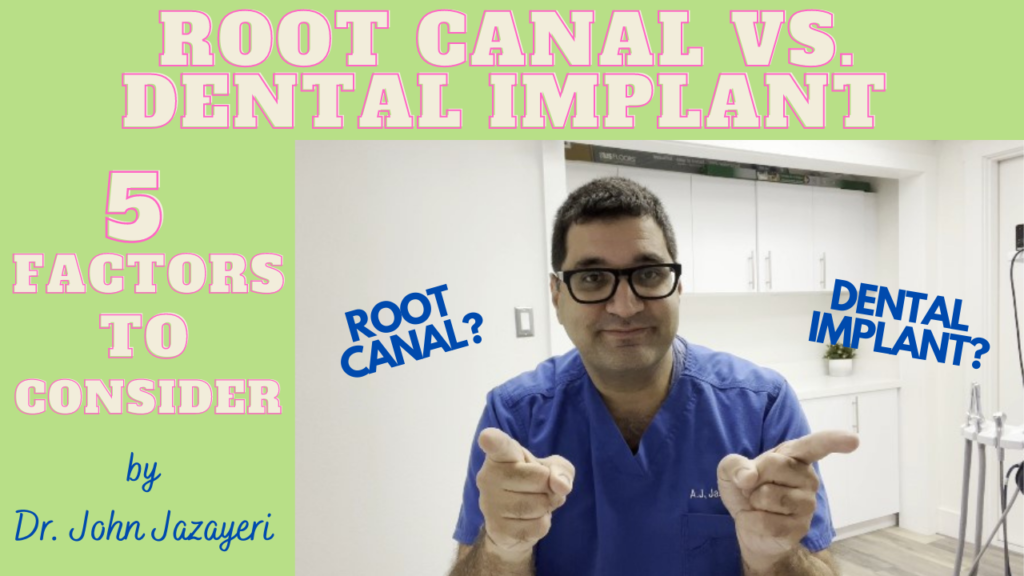A root canal treatment is a dental procedure that removes tooth infection while salvaging your tooth. Dental cavities always start off small. If left untreated, they grow and grow until they reach the tooth nerve. Your tooth is now infected. Unfortunately, your tooth requires a root canal if you want to save it. A simple filling or crown is no longer an option at this point. The only way to salvage infected teeth is to perform a root canal treatment on them. Otherwise, you will lose the tooth and need to have it removed. Performing a root canal treatment allows you to save infected teeth while simultaneously resolving the infection and eliminating the pain. Keep in mind an infected tooth never fix itself. The tooth continues to remain infected until either your dentist treats the tooth with a root canal or you remove the tooth from your mouth. The sooner you rid yourself of an infected tooth, the less pain and side effects you will suffer from.
When do I need a root canal treatment?
You need a root canal treatment whenever your tooth becomes infected. Here are a few scenarios where you might need to receive a root canal:
Tooth Infection
Most toothaches are the result of an untreated dental cavity that infects the tooth nerve. Once the cavity reaches your tooth nerve, the tooth becomes infected. This causes a lingering, throbbing, long-lasting toothache. The infected tooth becomes very sensitive to hot and cold. Plus, infected teeth harbor harmful bacteria that spread to other teeth as well as the rest of your body. Performing a root canal treatment eliminates the pain and infection while allowing you to save the bad tooth.
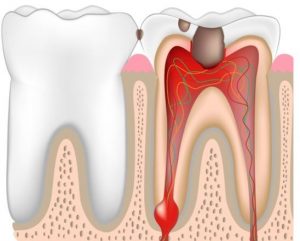
Your tooth becomes infected once the cavity bugs enter the tooth nerve
Dental Trauma
Another indication for a root canal treatment is fractured teeth. Deep tooth fractures impact the tooth nerve which requires a root canal treatment. Performing the root canal removes the damaged nerve so that you no longer feel any pain. This allows you to keep the tooth and your dentist can restore the tooth back to its original shape.

Fractured teeth sometimes require a root canal treatment to save them
Elective Root Canals
The goal of a root canal treatment is not always to fix broken and infected teeth. There are some instances that mandate an elective root canal treatment. One example is when the cavity is too close to the tooth nerve. You may not have a toothache just yet, but if your dentist cleans the tooth decay, you risk developing a terrible toothache. In such instances, an elective root canal is performed to keep the tooth from hurting. Elective root canal therapy is also commonly used during full mouth reconstruction. Lastly, a root canal treatment is occasionally used to correct tooth positioning during full mouth construction cases.
Root Canal for Baby Teeth
Even baby teeth sometimes require a root canal treatment. Root canal treatment for baby teeth is known as pulpotomy. Luckily, puplotomy is a much simpler process than adult root canal treatment. The purpose of a pulpotomy is to remove the infection and at the same time, save the baby tooth. By receiving a pulpotomy, your child gets to keep his or her infected tooth while eliminating the pain and infection. Losing baby teeth does bare some serious consequences. For example, losing baby teeth can affect your child's speech, confidence, and even lead to orthodontic issues.

A "Baby root canal" removes the infection from baby teeth so that you can keep the baby teeth
Is having a root canal infection always painful?
Root canal infections are responsible for some of the worse toothaches imaginable. However, not all root canal infections are painful. You may experience little to no pain despite the fact that your tooth is badly infected. Here are a few scenarios where a root canal infection does not cause pain:

While most root canal infections cause severe pain, there are cases that are not painful at all
Long-Standing Infections
A tooth with chronic infection could develop resistance to pain over time. Unfortunately, this does not mean that the infection has gone away. Infected teeth never fix themselves. They continue to remain infected until treated by your dentist or removed from the mouth. Don't ignore your infected teeth. Visit your dentist to fix the problem, or you will be living with the infection for many, many years to come!
Clogged Nerve Canals
Sometimes your teeth develop clogged nerve canals. Your tooth nerves clog up and become resistant to pain. This is somewhat similar to how your blood vessels clog up and lead to a heart attack. Teeth with clogged-up nerve canals can develop an infection without showing any symptoms of pain or discomfort. This phenomenon is more common among the elderly population. As a result, many seniors do not experience much pain despite having an infected tooth.
As you can see, not all root canal infections are painful. Regardless of the pain level, an infected tooth must be treated by your dentist with a root canal or you must remove the tooth. Leaving an infected tooth in your mouth has serious consequences. It can harm your remaining teeth and the infection can spread to the rest of your body through the bloodstreams or sinuses. The sooner you seek treatment for your infected tooth, the better the outcome.
What is a typical root canal procedure like?
A root canal treatment is essentially a filling for the tooth nerve. Of course, a root canal procedure is much more complex than a simple tooth filling. It takes a long time to access and remove the tooth nerve, disinfect the tissue, and fill the empty nerve canals. Here are the steps involved in a typical root canal treatment:
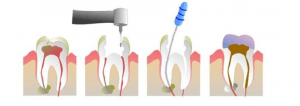
Root canal treatment can take anywhere from 30 minutes to 3 hours!
Nerve Removal & Disinfection
Root canal treatment starts off like most other dental treatments by numbing your mouth. It usually takes several shots to get numb enough for a root canal treatment. The worse the infection, the more shots you will need. Don't worry, your dentist will make sure that you're completely numb before starting treatment. Once numb, your dentist will isolate the tooth with a device known as a rubber dam. Your dentist will remove the cavity until he or she gains access to the tooth nerve. Removing the nerve canal is a tedious process and requires some patience. Your dentist will use these skinny wires, known as endodontic files, to gradually remove the tooth nerve tissue. Your dentist will also apply a series of disinfectants to your nerves to kill the offending bacteria.
Filling the Tooth Nerve
It's now time to fill up the nerve canals with a neutral filling material. This prevents cavity bugs from reinfecting the damaged tooth. Your dentist will insert a sterile material, known as Gutta Percha, to fill up the tooth nerve. Gutta percha seals off the tooth nerve to prevent bacteria from reinfecting it. Once the Gutta Percha has been applied, your tooth is now sealed off and the root canal treatment is complete.
A typical root canal procedure takes anywhere from 30 minutes up to 2 or 3 hours. It all depends on the complexity of your case as well as the comfort level of your dentist with root canal treatments. We recommend that you bring your headphone to listen to music to help you relax. Some dentists offer Nitrous Oxide gas or sedative medications to calm you down. Be sure to talk to your dentist beforehand if you are anxious. However, you shouldn't stress out too much. Once your tooth is numb, the rest of the root canal procedure is painless and straightforward. Just relax and let your dentist fix your tooth to make the pain go away.
Is a root canal treatment the best option for fixing my infected tooth?
We always recommend that you save your own tooth whenever it's possible. Teeth with a successful root canal treatment have an excellent long-term prognosis. They could last 10, 20 years, or sometimes even a lifetime. Of course, there are occasions where saving a tooth is simply not worth it. Sometimes you don't have enough tooth structure left to restore the tooth with confidence. In these cases, it's best to remove the tooth and go with a dental implant instead. Other times you may suffer from advanced periodontal disease surrounding your tooth. Again, removing the teeth is a better option than trying to save a loose tooth. Deciding between a dental implant and a root canal treatment could be somewhat tricky. Only you and your dentist can decide which treatment option is best for your mouth.

If you don't have enough tooth structure left to restore the tooth, then it's recommended to get a dental implant instead of a root canal
